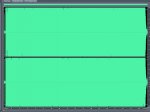After reading the whole first page of that
ProSound thread, it just depresses me how many people there are in this racket who have no idea what they're talking about when it comes to levels and metering. Everybody dances around the subject, but nobody in that thread really addresses what is going on.
Yeah OF COURSE the digital meters in editing software are translating samples, not analog signal. That's all downstream of the converter so there is nothing BUT samples at that point.
That's why it's called DIGITAL 
. That's what digital IS.
That's also why the units of measurement are different. dBFS is used at that point because it's the best way to represent digital values; VU meters are no longer the most appropriate way to gauge the signal at that point. Not because digital samples are digital samples and analog levels are analog levels, but because
- a) once you are fully in the digital realm, the 0VU reference - representing +4dBu - is no longer an important threshold; it's just another point in the digital continuum no different than any other, and
- b) the purposely slow ballistics of the VU metering standard do not respond fast enough to respond to (a minumum of) 44,100 different volume levels per second.
The underlying problem is not the digital meters reading "samples, not signal". The underlying problem is that very few people seem to understand gain structure in general and that
- both meter types (optionally along with PPM metering) are really rather ideal
for their sections of the signal chain,
- that they are measuring the same general thing thing in different ways with different numerical values. Even though one is dealing with analog voltage and the other is dealing with digital samples,
they still represent the same actual source voltage equivalents, and
- the key to understanding all of that and the idea of gain structre overall, is to understand what the translation value between the analog VU signal and the digital dBFS reading is in your signal chain. That requires knowing the calibration of the VU meters on the analog side and the calibration level of the A/D converters in your chain, using the dBu measurement scale as the rosetta stone.
All the rest of the discussion is at best, derivitave, and at worst, off the mark.
G.





 I want one to show me what the RECONSTRUCTED peaks are!!!!!!!
I want one to show me what the RECONSTRUCTED peaks are!!!!!!!
 But it's about halfway there right now.
But it's about halfway there right now.